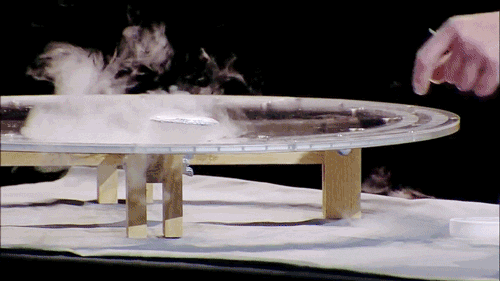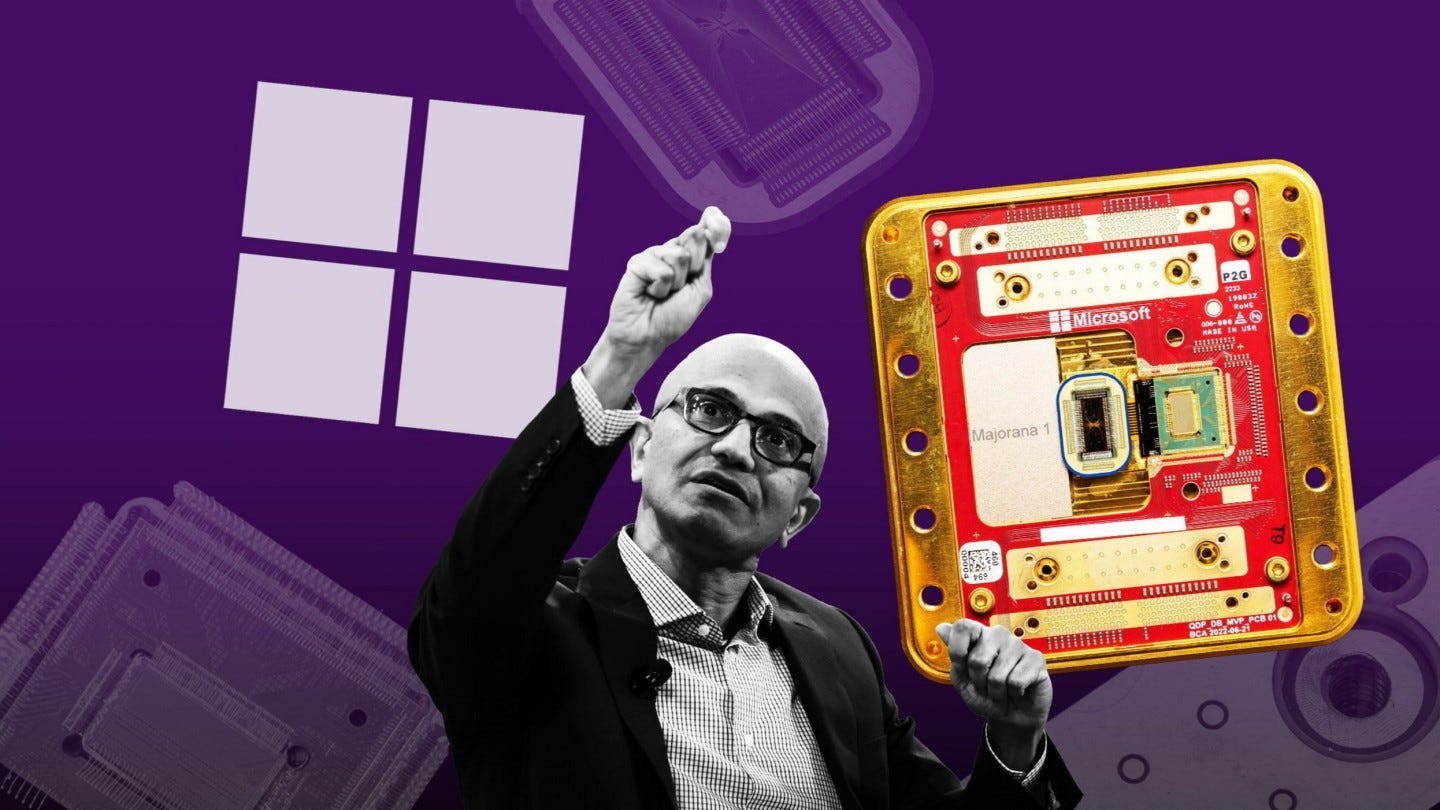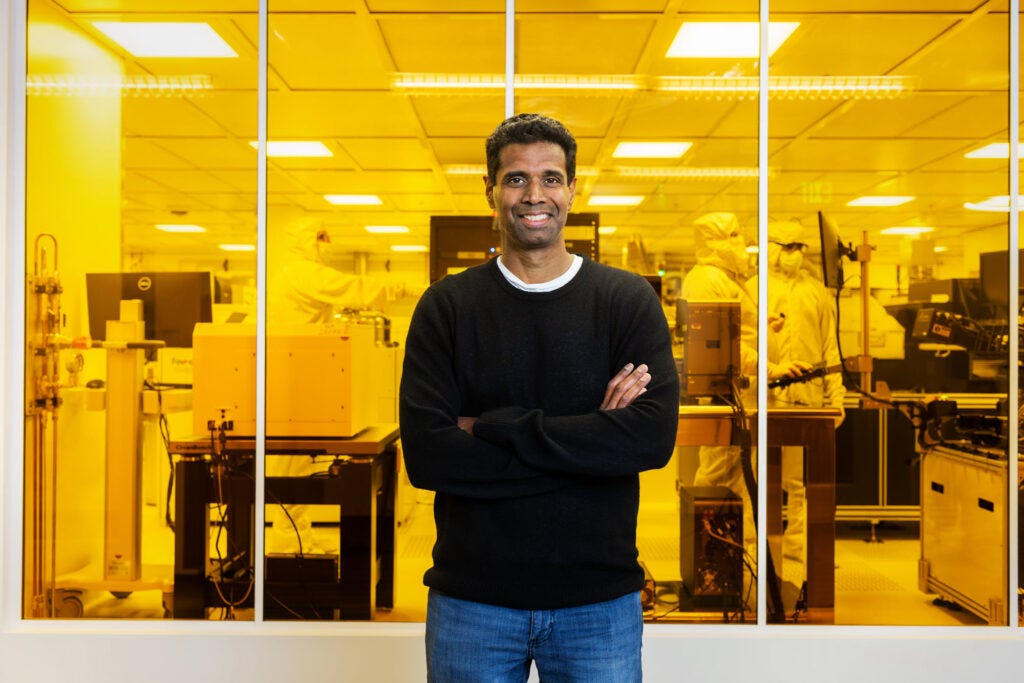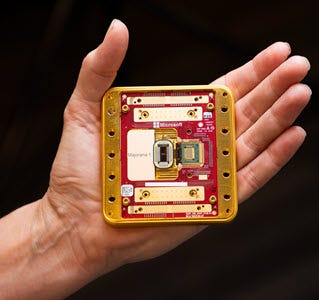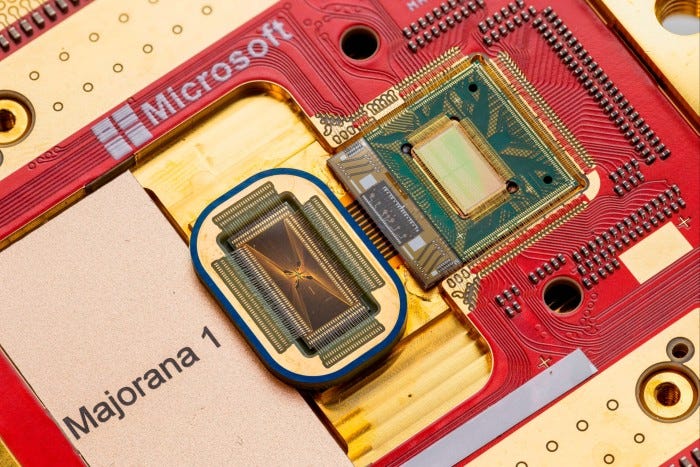AI: Microsoft achieves a milestone in 'Quantum Computing'. RTZ #638
...a pathway to a more reliable Qubit at scale, via a 'new state of matter'
I remain relatively tempered in these pages on tech topics beyond AI innovation in this AI Tech Wave. As a result, you won’t see too much here on quantum computing and other exciting long term tech pursuits. I remain deeply interested in those and other technologies like cold fusion, but believe in being focused and prioritized in terms of one’s daily efforts.
But today, a development on the quantum computing side, involving long theorized ‘Majorana fermions’, and barely observable in experimental setups (see above), does bear a mention. Particularly due to a quantum computing innovation around them by Microsoft, who’s been working on this stuff for two decades. So now, CEO Satya Nadella’s x/twitter statement that the impact on computing ‘from this new state of matter’ in our daily world could come ‘not in decades by in years’, got my interest. Enough to discuss it here today.
Microsoft announced the development in “Microsoft’s Majorana 1 chip carves new path for quantum computing”, an effort underway ‘to create a new state of matter’ there for over two decades:
“Microsoft today introduced Majorana 1, the world’s first quantum chip powered by a new Topological Core architecture that it expects will realize quantum computers capable of solving meaningful, industrial-scale problems in years, not decades.”
“It leverages the world’s first topoconductor, a breakthrough type of material which can observe and control Majorana particles to produce more reliable and scalable qubits, which are the building blocks for quantum computers.”
“In the same way that the invention of semiconductors made today’s smartphones, computers and electronics possible, topoconductors and the new type of chip they enable offer a path to developing quantum systems that can scale to a million qubits and are capable of tackling the most complex industrial and societal problems, Microsoft said.”
“We took a step back and said ‘OK, let’s invent the transistor for the quantum age. What properties does it need to have?’” said Chetan Nayak, Microsoft technical fellow. “And that’s really how we got here – it’s the particular combination, the quality and the important details in our new materials stack that have enabled a new kind of qubit and ultimately our entire architecture.”
“This new architecture used to develop the Majorana 1 processor offers a clear path to fit a million qubits on a single chip that can fit in the palm of one’s hand, Microsoft said. This is a needed threshold for quantum computers to deliver transformative, real-world solutions – such as breaking down microplastics into harmless byproducts or inventing self-healing materials for construction, manufacturing or healthcare. All the world’s current computers operating together can’t do what a one-million-qubit quantum computer will be able to do.”
“Whatever you’re doing in the quantum space needs to have a path to a million qubits. If it doesn’t, you’re going to hit a wall before you get to the scale at which you can solve the really important problems that motivate us,” Nayak said. “We have actually worked out a path to a million.”
“The topoconductor, or topological superconductor, is a special category of material that can create an entirely new state of matter – not a solid, liquid or gas but a topological state. This is harnessed to produce a more stable qubit that is fast, small and can be digitally controlled, without the tradeoffs required by current alternatives. A new paper published Wednesday in Nature outlines how Microsoft researchers were able to create the topological qubit’s exotic quantum properties and also accurately measure them, an essential step for practical computing.”
The thing with Qubits for the longest time has been error correction:
“The quantum world operates according to the laws of quantum mechanics, which are not the same laws of physics that govern the world we see. The particles are called qubits, or quantum bits, analogous to the bits, or ones and zeros, that computers now use.”
“Qubits are finicky and highly susceptible to perturbations and errors that come from their environment, which cause them to fall apart and information to be lost. Their state can also be affected by measurement – a problem because measuring is essential for computing. An inherent challenge is developing a qubit that can be measured and controlled, while offering protection from environmental noise that corrupts them.”
“Qubits can be created in different ways, each with advantages and disadvantages. Nearly 20 years ago, Microsoft decided to pursue a unique approach: developing topological qubits, which it believed would offer more stable qubits requiring less error correction, thereby unlocking speed, size and controllability advantages. The approach posed a steep learning curve, requiring uncharted scientific and engineering breakthroughs, but also the most promising path to creating scalable and controllable qubits capable of doing commercially valuable work.'“
Key to the whole thing from Microsoft, are the ‘Majoranas’, explained in a YouTube video, and in text below:
“The disadvantage is – or was – that until recently the exotic particles Microsoft sought to use, called Majoranas, had never been seen or made. They don’t exist in nature and can only be coaxed into existence with magnetic fields and superconductors. The difficulty of developing the right materials to create the exotic particles and their associated topological state of matter is why most quantum efforts have focused on other kinds of qubits.”
“The Nature paper marks peer-reviewed confirmation that Microsoft has not only been able to create Majorana particles, which help protect quantum information from random disturbance, but can also reliably measure that information from them using microwaves.”
“Majoranas hide quantum information, making it more robust, but also harder to measure. The Microsoft team’s new measurement approach is so precise it can detect the difference between one billion and one billion and one electrons in a superconducting wire – which tells the computer what state the qubit is in and forms the basis for quantum computation.”
“The measurements can be turned on and off with voltage pulses, like flicking a light switch, rather than finetuning dials for each individual qubit. This simpler measurement approach that enables digital control simplifies the quantum computing process and the physical requirements to build a scalable machine.”
It’s fascinating how they went onto build these Majoranas:
“Microsoft’s topological qubit architecture has aluminum nanowires joined together to form an H. Each H has four controllable Majoranas and makes one qubit. These Hs can be connected, too, and laid out across the chip like so many tiles.
“It’s complex in that we had to show a new state of matter to get there, but after that, it’s fairly simple. It tiles out. You have this much simpler architecture that promises a much faster path to scale,” said Krysta Svore, Microsoft technical fellow.”
The whole announcement is worth a read for technical background. Lot more on it all here and here. There’s also a podcast with CEO Satya Nadella and Dwarkesh Patel on the subject, as well as Microsoft’s new Gaming language model Muse (a subject for another day).
But this Microsoft milestone seems to be a path to qubits at scale. And that is as important as the path to transistors at scale that started in 1947.
It’s notable that the quest for the underlying state of matter, started a decade earlier, as the FT explains:
“Microsoft’s claimed breakthrough follows years of research into a type of particle that comprises a fourth state of matter, distinct from solids, liquids and gases. The existence of the particles, known as Majorana fermions, was first theorised in 1937, although scientists have struggled to demonstrate they actually exist.”
And it could have meaningful impact on AI at scale. Again, ‘not in decades, but in years’. Likely more than we’d all like:
”Speaking before the latest announcement, one longtime investor in quantum computing compared its ambitious research to the pursuit of cold fusion, the effort to produce a nuclear reaction at room temperature that has become a byword for scientific overpromising.”
“It also comes just weeks after Nvidia chief executive Jensen Huang forecast that useful quantum computers were still 20 years away — much longer than companies working in the field claim.”
So there’s still a long way to there from here. So we’ll have to wait for it too. But this progress and milestone by Microsoft is notable, and cool.
So worth pausing to understand. Useful for the AI Tech Wave some day. Stay tuned.
(NOTE: The discussions here are for information purposes only, and not meant as investment advice at any time. Thanks for joining us here)




